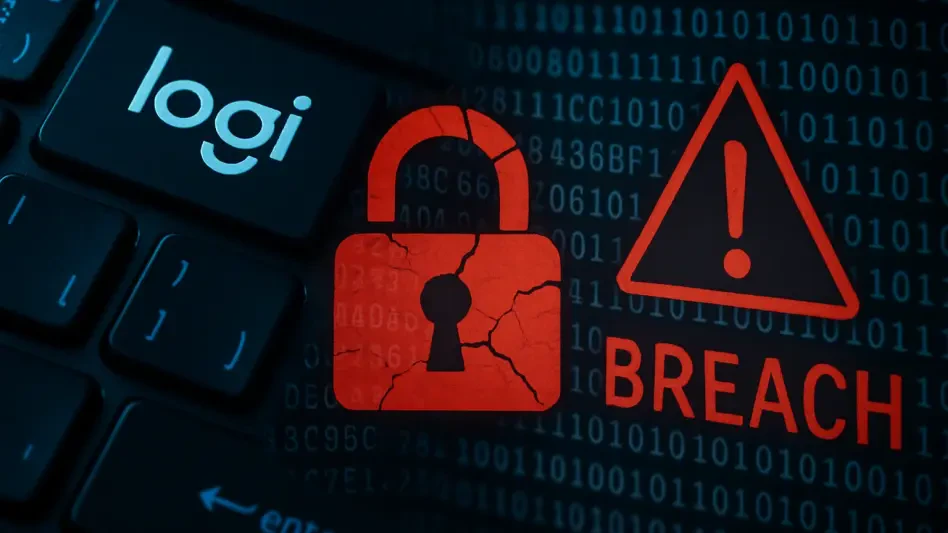In an era where connectivity drives progress, the staggering projection of IoT devices doubling from 19.8 billion currently to over 40.6 billion by 2034 paints a vivid picture of how deeply embedded these technologies have become in critical industries like energy, manufacturing, transportation, healthcare, and government. This rapid expansion signifies more than just numbers; it reflects a transformative shift in how these sectors operate, leveraging interconnected systems for unprecedented automation and efficiency. From smart grids optimizing energy distribution to real-time logistics tracking, the reliance on IoT and OT is reshaping the backbone of modern infrastructure.
The significance of these technologies lies in their ability to streamline processes and foster innovation, particularly in environments where downtime or inefficiency can have cascading effects. In manufacturing, IoT sensors monitor equipment health to prevent costly failures, while in healthcare, connected devices enable remote patient monitoring, saving lives through timely interventions. Operational technology, often the less visible counterpart, ensures that physical processes in industrial settings remain seamless, bridging the gap between digital commands and real-world actions.
Key market players like Zscaler have emerged as pivotal guardians in this interconnected realm, offering cybersecurity solutions tailored to protect sprawling networks of devices and systems. As 5G networks accelerate data transfer and enable more devices to connect simultaneously, the landscape is further complicated by emerging regulatory considerations that demand stricter security standards. These dynamics underscore a critical juncture for industries, where the promise of technological advancement must be balanced with robust defenses against an evolving array of threats.
Escalating Cybersecurity Threats in IoT and OT Environments
Key Trends in Attack Sophistication and Volume
The threat landscape for IoT and OT systems has grown alarmingly complex, with a reported 67% surge in Android malware targeting mobile endpoints integrated into these networks. Critical sectors, particularly energy, have witnessed an astounding 387% increase in attacks, signaling a deliberate focus by cybercriminals on infrastructure with high-stakes consequences. This escalation is not merely about volume but also sophistication, as attackers deploy advanced tactics such as command injection and botnet propagation, exemplified by notorious malware like Mirai.
Beyond traditional methods, nation-state actors, including groups like Volt Typhoon, are exploiting these environments for espionage and disruption, adding a geopolitical layer to the risk profile. The growing interconnectivity, especially in hybrid work setups and public-facing infrastructure, has widened the attack surface, making it easier for malicious actors to infiltrate systems. Looking ahead, the integration of AI-driven exploits is poised to intensify threats, with hyper-targeted phishing and smishing campaigns expected to become more prevalent, exploiting human vulnerabilities alongside technical ones.
Sector-Specific Impacts and Growth Projections
Critical infrastructure sectors bear the brunt of these cyber onslaughts, with manufacturing and transportation each accounting for 20.2% of IoT malware attacks, reflecting their heavy reliance on interconnected systems. Other areas are not spared, as government entities face a 370% rise in IoT malware, while healthcare grapples with a 225% spike in mobile attacks, driven by the lucrative nature of patient data. These figures highlight how sector-specific dependencies on technology create unique vulnerabilities that attackers are quick to exploit.
Geographically, the United States stands as the primary target, handling 54% of IoT attacks and 62.97% of global device traffic, though regions like Hong Kong and the United Kingdom also report significant impacts. Projections into 2026 suggest that ransomware will remain a persistent menace, compounded by AI-enhanced threats that adapt to defensive measures. This trajectory indicates that without proactive intervention, the frequency and severity of attacks on critical sectors will likely continue to climb, demanding urgent attention to security gaps.
Challenges in Securing IoT and OT Systems
Securing IoT and OT environments presents distinct hurdles, primarily due to the reliance on legacy protocols that predate modern cybersecurity frameworks. Many of these systems operate in rugged conditions, such as industrial plants or remote energy facilities, where devices lack the robust security controls found in newer IT infrastructures. This outdated foundation makes them susceptible to exploitation, often through simple yet effective attack vectors that bypass minimal defenses.
Technological barriers compound the issue, with weak device configurations and firmware flaws serving as entry points for botnets seeking to expand their reach. Attackers frequently target routers and similar hardware, leveraging vulnerabilities to propagate malware across networks. Moreover, the rapid pace of adoption in critical industries often outstrips the implementation of adequate security measures, leaving systems exposed as organizations prioritize functionality over protection.
Addressing these systemic weaknesses requires innovative approaches, such as continuous monitoring to detect unusual activity in real time and anomaly detection to flag potential breaches before they escalate. While these solutions offer promise, their deployment must overcome practical challenges, including integration with existing infrastructure and ensuring scalability across diverse environments. Until such measures are widely adopted, the gap between technological advancement and security readiness will remain a critical point of concern.
Regulatory and Compliance Landscape for IoT and OT Security
Navigating the regulatory landscape for IoT and OT cybersecurity is becoming increasingly complex as global markets establish frameworks to address growing risks. Standards and mandates are evolving to ensure that organizations prioritize security, especially in critical infrastructure where breaches can pose national security threats. These regulations often focus on safeguarding data integrity and system reliability, pushing industries to align with stringent compliance requirements.
Emerging policies are placing greater emphasis on data protection and device security, recognizing the interconnected nature of modern systems. For instance, guidelines are being developed to enforce minimum security standards for IoT devices, aiming to reduce vulnerabilities at the manufacturing stage. Such measures are crucial in preventing widespread exploitation, particularly as the volume of connected devices continues to soar, amplifying the potential impact of a single breach.
The influence of these regulatory changes is reshaping industry practices, driving a shift toward standardized security frameworks that can be applied universally. Compliance is no longer optional but a fundamental aspect of operational strategy, compelling organizations to invest in robust defenses and regular audits. As these policies mature, they are likely to foster greater accountability, ensuring that cybersecurity keeps pace with technological innovation across diverse sectors.
Future Outlook for IoT and OT Cybersecurity
Looking toward 2026, the cybersecurity horizon for IoT and OT systems appears fraught with challenges, including the anticipated rise of AI-driven attacks that exploit nuanced vulnerabilities. The expansion of 5G networks, while enabling faster connectivity, also introduces new risks by increasing the number of connected endpoints susceptible to breaches. These developments suggest a future where threat actors continuously adapt, necessitating equally dynamic defensive strategies.
Market disruptors, such as evolving ransomware strains targeting critical sectors, are expected to intensify, potentially causing widespread disruption if not addressed. However, opportunities for resilience emerge through emerging technologies like AI-based defenses that can predict and mitigate threats before they materialize. Unified security platforms also hold potential, offering comprehensive visibility and control across disparate systems, which is vital in managing complex environments.
Global economic conditions and consumer demand for secure, interconnected systems will further shape industry growth, pushing for innovations like zero trust architectures and microsegmentation. These approaches, which emphasize strict access controls and network isolation, are gaining traction as essential tools for enhancing resilience. As these trends unfold, the balance between leveraging cutting-edge technology and safeguarding against its inherent risks will define the trajectory of IoT and OT cybersecurity.
Key Takeaways and Strategic Recommendations
The findings from the latest ThreatLabz report underscore the rapid escalation of risks associated with IoT and OT systems in critical industries, painting a clear picture of an urgent cybersecurity crisis. The sophistication and volume of attacks targeting these environments have surged, with critical sectors facing unprecedented threats that exploit both technical and human vulnerabilities. This situation demands immediate and comprehensive action to protect the digital infrastructure that underpins modern society.
Strategic recommendations include the adoption of zero trust policies to ensure that every connection is verified, alongside embedding security at the SIM or eSIM level for cellular devices to prevent unauthorized access. Consolidating defenses into unified platforms offers another layer of protection, providing end-to-end visibility across networks. These measures, combined with continuous monitoring, are essential for identifying and neutralizing threats in real time, particularly in sprawling IoT ecosystems.
Reflecting on the insights gathered, it becomes evident that collaboration across industries and governments is crucial in addressing the scale of these challenges. Investments in scalable security solutions and training programs have laid a foundation for resilience, yet the path forward requires even bolder steps. Moving ahead, stakeholders need to prioritize international partnerships to develop universal standards, while innovators are encouraged to explore adaptive technologies that can anticipate future threats, ensuring that protection evolves alongside connectivity.








